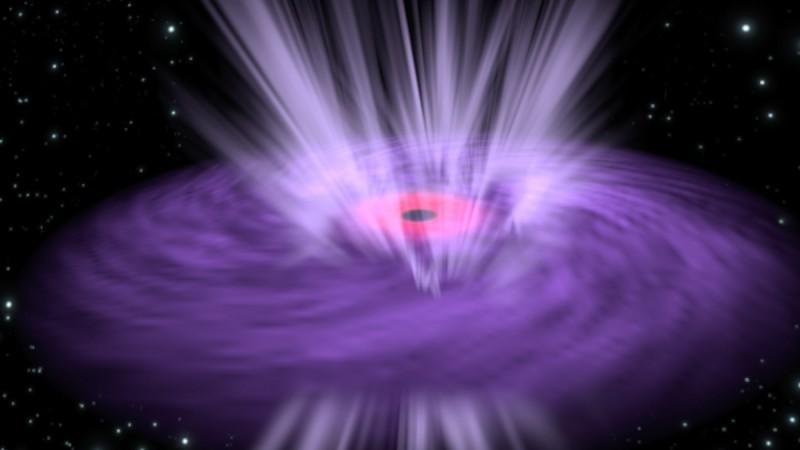
The area around supermassive black holes is prone to violent temperature fluctuations, NASA's Nuclear Spectroscopic Telescope Array (NuSTAR) telescope has detected.
Also Read: GOES-16 satellite spots a giant hole in Sun's upper atmosphere
Supermassive black holes are believed to exist in the middle of large galaxies including our own Milky Way.
Debris, gas and other matter form a disk — accretion disk — around the blackhole. The matter gets pulled into the super giant black holes owing to its high gravity.
Hot streams of gas or winds are generated from the accretion disk prior to the feeding process, which travel at a pace equal to a quarter light speed.
"We know that super-massive black holes affect the environment of their host galaxies, and powerful winds arising from near the black hole may be one means for them to do so," the NuSTAR principal investigator Fiona Harrison, Benjamin M Rosen Professor of Physics and the Kent and Joyce Kresa Leadership Chair of Caltech's Division of Physics, Mathematics and Astronomy said.
"The rapid variability, observed for the first time, is providing clues as to how these winds form and how much energy they may carry out into the galaxy," he said further.
For the first time, scientists have analysed winds, originating from a nearby black hole, that were interacting with radiation emitted from the black hole's edge. The analysis was done with the help of the European Space Agency's (ESA's) XMM-Newton telescope and NuSTAR.
The X-rays given off from the black hole's edge were observed by researchers to learn more about the temperatures of the winds.
It was found that as the X-rays passed through the winds, chemical elements such as iron and magnesium, which were present in the winds, soaked up some wavelengths of light in the X-ray spectrum.
"While observing this spectrum, the team noticed that the absorption features were disappearing and reappearing in the span of a few hours," as per a statement from the California Institute of Technology (Caltech).
"The team concluded that the X-rays were actually heating up the winds to very high temperatures — millions of degrees Fahrenheit — such that they became incapable of absorbing any more X-rays. The winds then cool off, and the absorption features return, starting the cycle over again," the statement quoted further.
This research would aid scientists in finding out more about how the evolution of galaxies is affected by these winds.
"This is the first time we have seen that winds are interacting with the black hole's radiation," Michael Parker, postdoctoral scholar at University of Cambridge Institute of Astronomy and first author of the paper said.
"Further study of this source is likely to have wide-ranging implications for our knowledge of how these winds form and are powered, where they are located, how dense they are, and how long they last—all of which will add to our understanding of the interaction between black holes and their galaxies," Parker concluded.
The findings of this research will be published in the journal Nature.








